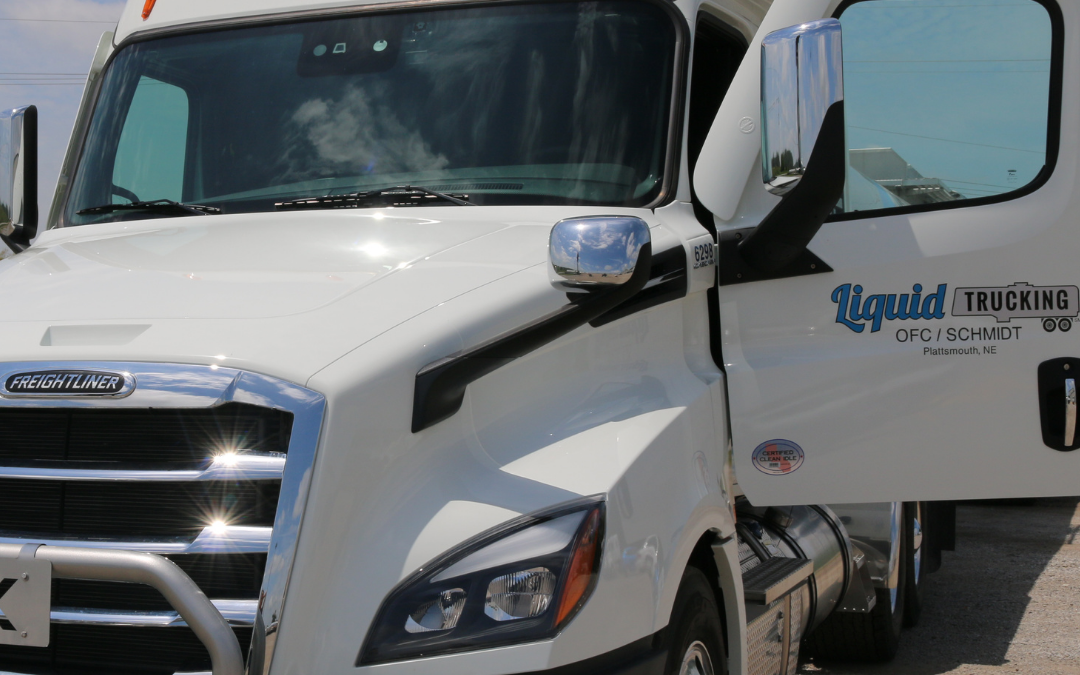As set by the National Safety Council, June is recognized as National Safety Month. Even though safety is a priority all year round at Liquid Trucking, we’d like to take the opportunity this month to identify some common safety risks in trucking and how to avoid them. Each step we take to improve our fleet’s safety is one step to providing safer roadways and communities.
Truck Driver Safety Tips for National Safety Month
Safe driving is always a key concern for employers, but it’s especially true for trucking companies. Since truck drivers’ jobs are completely centered around driving, they must have the knowledge and skill to safely do their jobs. Here are some facts and tips that carriers can share with their drivers during National Safety Month…
Eliminate Distractions
Distracted driving is nothing new, but with the increase of cell phones in the last decade, it has been made alarmingly clear that texting and driving is a dangerous habit. Research conducted by the Federal Motor Carrier Safety Administration found that drivers of commercial motor vehicles are 23.2 times more likely to crash (or have a close call) when texting than those who don’t. On average, a text will take a driver’s eyes off the road for 4.6 seconds. If you’re driving at 55 MPH and look at a text for 4.6 seconds, you will have traveled 371 feet without looking. For truck drivers, that leaves a lot of time and space for a potentially unfortunate situation to happen. Drivers must eliminate cell phones, along with other distractions like eating, from the get-go. Some tips for drivers: schedule regular breaks, don’t try to multitask, put devices away and on silent, and pull over if you must make a call or check a text message.
Buckle Up
Good drivers still need to wear seat belts. While you may be a good driver, others aren’t. Plus, you never know what you may encounter while on the road. It’s possible to be involved in a crash caused by another bad driver, bad weather, a mechanical malfunction, or a tire blowout. According to the Centers for Disease Control and Prevention, 1 in 6 truck drivers didn’t wear their seat belts in 2013, and more than 1 in 3 truck drivers who died in crashes in 2012 weren’t wearing a seat belt. Buckling up is the single best thing you can do to protect yourself from injuries or a fatality in a crash. Some tips for drivers: make buckling up the first thing you do and adjust the belt to make sure it fits comfortably and properly.
Drive Cautiously
No matter who you are or what you are driving, it’s important to drive with caution. For truck drivers, it’s extremely crucial that they slow down and are aware of their surroundings while on the road. When drivers are in a hurry or get too lenient, that’s when a crash or a close call happens. Large trucks are difficult to stop and to quickly maneuver, so drivers must pay attention and be prepared to change lanes, slow down, or stop. The FMCSA says that a truck traveling at 65 MPH will take up to two football fields to stop. With that in mind, here are some tips for drivers: slow down, check your surroundings and blind spots, follow the posted speed limit, and avoid driving directly next to another vehicle.
Do Pre and Post Trip Inspections
Drivers need to schedule a time to thoroughly complete their pre and post trip inspections on their trucks. Failure to do so may result in fines, inoperable equipment, or unsafe driving. By regularly checking their truck, drivers can proactively spot issues before they become a hazard. If they spot an issue, they should contact their dispatch or diesel tech team to get it fixed before going out. Some tips for drivers: schedule 10-15 minutes to do your inspections, do your inspection the same way every time (so you don’t miss anything) and consult the safety team if you have questions.
Watch the Weather
Before you get on the road, be prepared. While being based out of the Midwest, Liquid Trucking drivers know that the weather can be unpredictable and can change in an instant. As stated by the Federal Highway Administration, “Weather acts through visibility impairments, precipitation, high winds, and temperature extremes to affect driver capabilities and vehicle performance…” Driving in bad weather is unsafe for several reasons, but it most definitely increases the likelihood of a crash. Some tips for drivers: check the weather before leaving and throughout the day, drive slowly if you encounter bad weather, have a survival and tool kit on hand, and pull over if the conditions are unsafe.
Develop Healthy Habits
A healthy lifestyle can be hard to balance while traveling long distances as a truck driver. The job itself is sedentary and drivers may rely on caffeinated drinks and sugary snacks to get through the day. Not being active and having a bad diet can lead to health issues that can directly impact how well and if a driver can carry out their job. Some tips for drivers: take breaks, do 15-minute intervals of exercise throughout the day, choose healthy snacks, and get a night’s rest.
Closing Thoughts
These are just a few tips that drivers can implement into their routines to improve safety. Safety isn’t just something that we practice in June, but every single day. As a fleet, we frequently discuss the best safety practices and procedures and how to mitigate bad habits.
If you’re looking for a bulk liquid hauler who prioritizes safety, look no further. Liquid Trucking is proud to focus our efforts on transporting liquids safely and efficiently. We can haul food, agriculture, and hazmat materials to the continental U.S. and Canada. To get a quote today, please call 844-GO-TANKS to learn more!
